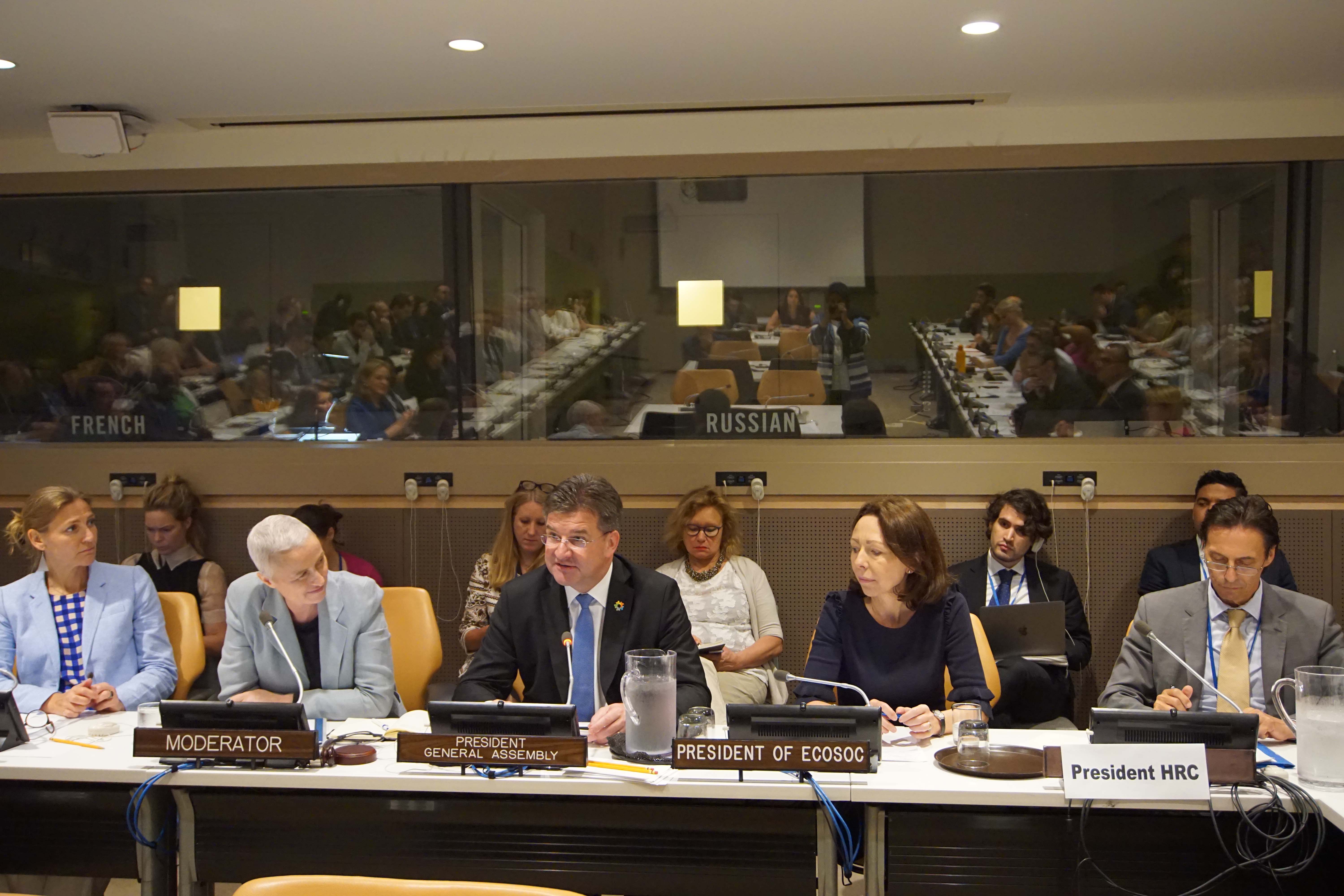Towards Sustaining Peace through Participation of All: Synergies of a Cross-Pillar Approach to Peace and Security, Agenda 2030 and Human Rights

– As delivered –
Statement by H.E. Mr. Miroslav Lajčák, President of the 72nd Session of the UN General Assembly, at Side Event: “Towards Sustaining Peace through Participation of All: Synergies of a Cross-Pillar Approach to Peace and Security, Agenda 2030 and Human Rights”
Good afternoon, everyone.
Thank you for inviting me to this roundtable discussion.
I think we can make one conclusion, even from the outset: which is that things have changed. For the better.
Because this kind of event might not have been seen a few decades ago.
Security was security…. Development was development…..And human rights were human rights.
Today, however, we know that all three are needed, if we want to make this world a better place to live in.
So, as my first point, I will focus on this cross-pillar approach. And on why it is so crucial.
Well, simply, the evidence is overwhelming.
It comes from data. And it comes from stories from the ground.
War chokes development.
And it is not hard to understand why.
How can you build the capacity of an institution, if that institution has been bombed to the ground?
How can you spur economic growth, if fighting has cut off trade routes?
And, how can you invest in a workforce, if the same workforce is fleeing for its life?
This relationship also works in reverse. Because development can actually tackle the root causes of conflict – and incentivise peace.
In fact, a recent United Nations-World Bank study showed that a number of contemporary conflicts stem from group-based grievances. It told us that people with feelings of exclusion, injustice and unfairness can turn more easily to violence. And that, often, this can be driven inequalities, or a lack of opportunity.
Moreover, we have always known that human rights violations come hand-in-hand with conflict. But now we are also seeing that they can be an indicator – or an early warning sign – of conflict.
So, the need for a cross-pillar approach is clear.
And not just to those of us in this building. Which is the second point I want to make today.
Last April, I convened a High-Level Meeting on Peacebuilding and Sustaining Peace.
This was part of a larger process, which involves the UN and its Member States taking a more proactive and preventive approach to peace – rather than waiting until it is gone, to react.
This meeting brought many leaders and policy-makers, as well as non-government actors, to New York.
And, I have to say that the theme of a cross-pillar approach was very strong.
We heard many calls for integration and coherence. We listened to examples of new partnerships, which bridge the traditional divides. For example, women’s networks working with government ministries…. Or business representatives exploring ways to support UN peacebuilding activities…. Or new projects which include activities that tackle development, human rights and peace.
So, this high-level meeting showed:
Number one: that there is a huge awareness of the need for a cross pillar approach.
And number two: that best practices are already being seen on the ground.
The question remains: how can it become the norm, rather than the exception?
Because it is not enough to see the links. It is not enough to know that peace, development and human rights should come as a package.
We actually have to do something about it.
And I think one opportunity can come from a stronger focus on prevention. Which is what I want to talk about, as my third and final point.
The saying “prevention is better than cure” has been around for as long as we can remember.
But now there is data behind it. The same UN-World Bank report showed that, for every 1 dollar invested in conflict prevention, we could save up to seven dollars, over the medium to long term.
I think we need to explore how better – and more – conflict prevention can accelerate the implementation of the 2030 Agenda, and safeguard human rights. But, similarly, we need to look at how the SDGs, and our various human rights mechanisms [such as the Universal Periodic Review], can actually be tools for prevention. How can they incentivise peace, rather than violence? How can they help us to act, before it’s too late?
This kind of approach is starting to take root, on the ground. The Peace and Development Adviser initiative – run jointly by the UN’s Department of Political Affairs and UNDP – is a good example. It allows experts to the raise the alarm, when the warning signs of conflict are seen. But, at the same time, they also engage in longer-term development strategies. Together, this works to prioritise prevention, through a cross-pillar approach.
So, to conclude, I want to thank our hosts today: the Permanent Missions of the Czech Republic, Slovakia and Slovenia, as well as the Center on International Cooperation of New York University.
And I’ll end by saying, simply, that we know that a cross-pillar approach is needed.
And it is happening.
Just not enough.
This event, today, shows that this is changing.
But we need to speed up.
Thank you again.